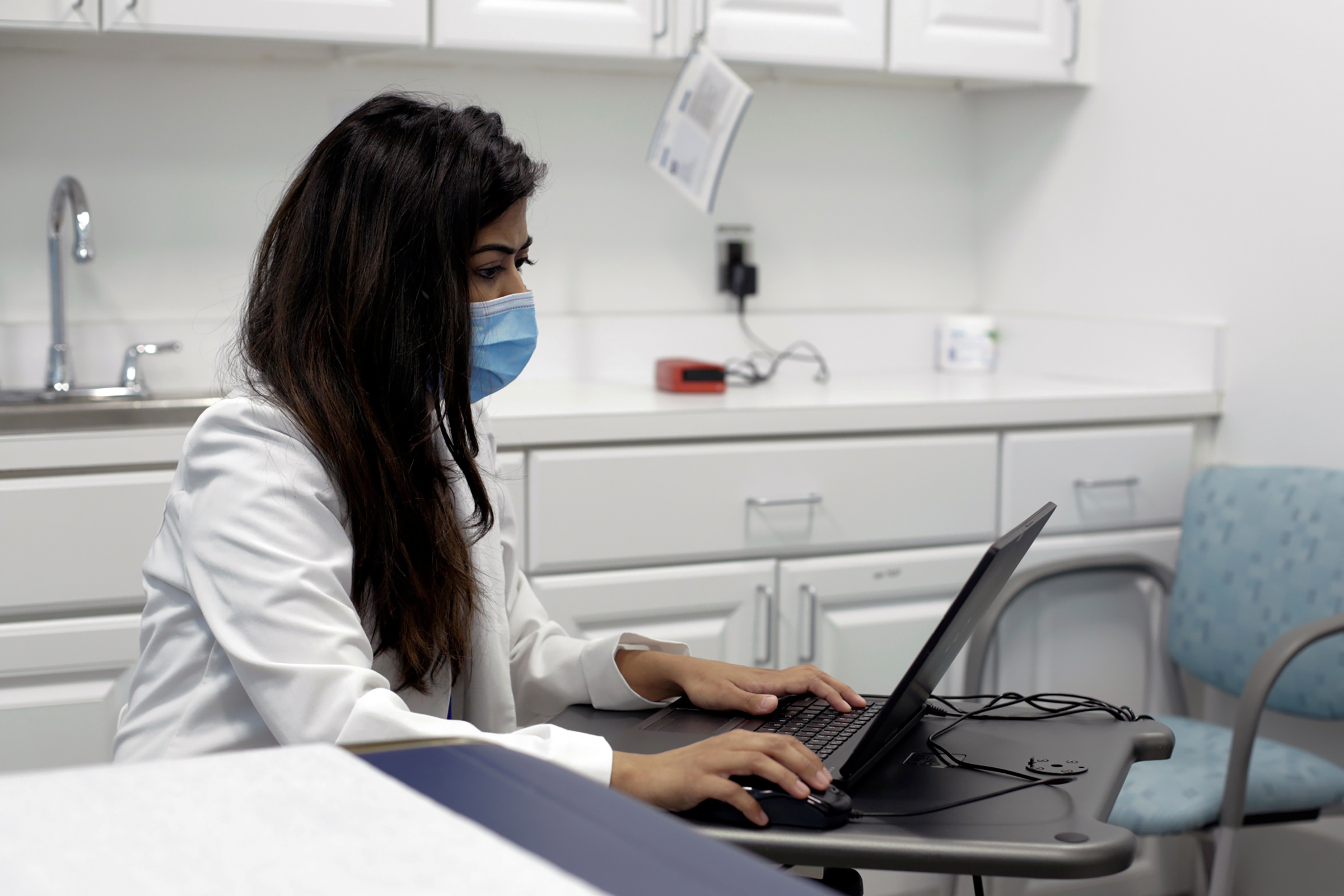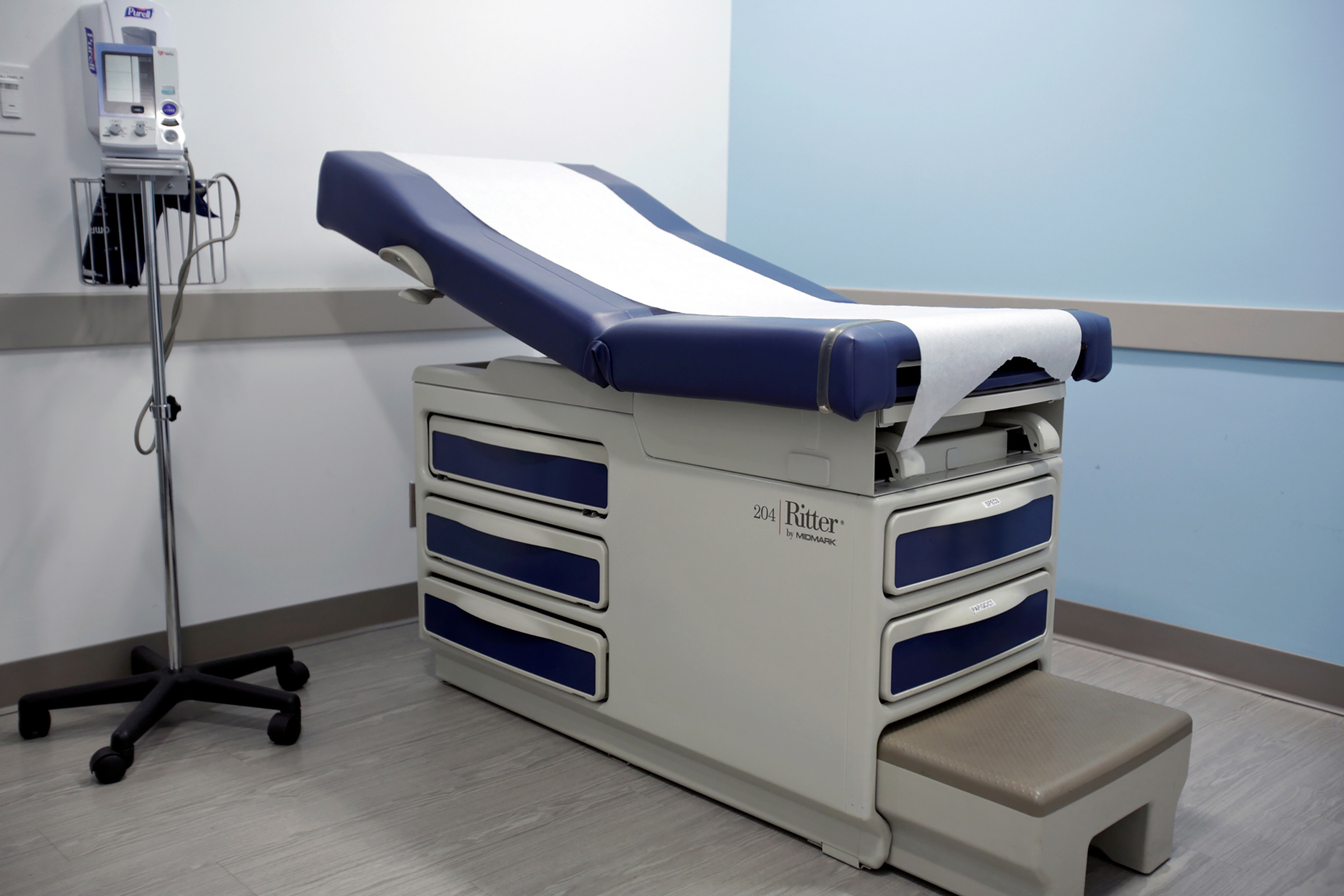
When an emergency responder in one of the New York counties hardest hit by COVID-19 recently found out she was pregnant, she decided that it wasn’t the right time to have a child. So between a busy schedule of helping patients, she made an appointment for Planned Parenthood’s new telehealth service, requested an abortion, and attended an initial counseling session—all while sitting in an ambulance.
Once she completed her virtual visit through the organization’s app, the first responder’s ambulance swung by her local Planned Parenthood clinic so she could pick up the pills needed to end her pregnancy.
“Sexual, reproductive health care needs don’t stop, even in the midst of a pandemic,” says Dr. Meera Shah, the medical director for Planned Parenthood Hudson Peconic, the regional affiliate that serves the New York area where the emergency responder lives. “It is so important to make sure that all of our services are available in some way, shape or form for our patients right now.”
As the coronavirus continues to threaten lives and shutter businesses across the country, more Americans are communicating with their doctors electronically than ever before. Now Planned Parenthood is joining the movement by expanding telemedicine services to all 50 states this month in an effort that providers say will help patients get necessary care while following social distancing guidelines, protecting health care workers and reducing opportunities to spread the coronavirus.
Shah’s New York health centers started offering telehealth appointments on April 2, and by the end of April, every state will have a way for patients to connect with Planned Parenthood providers online.
“It’s really exciting to be able to offer these telehealth services—anything that we can do to increase access to sexual and reproductive health services and reduce barriers, particularly for the communities that we serve,” Alexis McGill Johnson, Planned Parenthood’s acting president, told TIME in an interview Monday.
Many Planned Parenthood patients are low-income, people of color, LGBTQ people, undocumented immigrants or those who live in rural areas and underserved communities. These “people who traditionally have not had access to health care systematically in the same way in this country” are also the ones being disproportionately impacted by the pandemic, McGill Johnson said.

More than 16 million Americans have lost their jobs in the last three weeks. Huge numbers are struggling to pay rent and feed their families. It could be months before many of them receive one-time stimulus checks from Congress. While most states now have stay-at-home orders due to COVID-19 and many have suspended all non-essential medical procedures, people still need health care.
In the past, Planned Parenthood affiliates in about half the states offered ways to get birth control through an app, and some offered UTI treatment virtually. But the new telehealth app means that patients will also be able to access services including testing and treatment for sexually-transmitted infections (STIs), HIV testing and prevention, emergency contraception, hormone therapy, vasectomy counseling, abortion counseling, and—like the first responder—prescriptions for abortion pills. (Doctors can prescribe the medications for an abortion through the app, but patients still have to visit a clinic because the Food and Drug Administration requires that providers distribute mifepristone, one of the drugs commonly used in medication abortions, in person, despite doctors saying this requirement is medically unnecessary.)
Which services are available via telehealth will vary by state and region, depending on different state laws and local clinics’ available staffing. Since the COVID-19 pandemic began, several conservative states have cited the virus as a reason to suspend abortions, though courts have blocked many of those moves.
McGill Johnson says there are a number of reasons that patients may want to access Planned Parenthood’s unique telehealth services—rather than a different doctor’s office’s virtual options—during the coronavirus crisis. For one, Planned Parenthood offers sliding scale fees and often works with uninsured patients, a population that is growing as people lose their jobs. It also serves as a resource to teenagers who might not want their parents or regular doctors to know they are seeking out birth control, STI testing or other reproductive health care. And of course, not all doctors’ offices provide abortions.
“We are able to really rely on the fact that people have known us and have trusted our expertise in providing [reproductive health care] services,” McGill Johnson says.
The expansion of these telehealth services also comes as Planned Parenthood is engaged in a number of court battles pushing back on states that have tried to restrict abortion access during the coronavirus pandemic. After days of conflicting rulings in Texas last week, Planned Parenthood and other abortion rights groups on Saturday asked the U.S. Supreme Court to step in and block a ruling upholding the state’s ban on nearly all abortions. Then, Monday night, a federal appeals court reversed its earlier ruling and stopped Texas from limiting medication abortions.
McGill Johnson says conservatives have “seized on this moment to politicize health care” but that her organization is used to juggling multiple efforts at once.
“Planned Parenthood has a unique muscle,” she says. “Our goals of offering services to our patients oftentimes have to happen at the same time that we are pushing back on many restrictions.”
Shah says that in New York, her clinics have continued to provide in-person services for prenatal care and abortions, and by shifting initial visits for everything else to the telehealth app, she has been able to limit the number of people in each clinic.
“Sexual, reproductive health care, especially pregnancy related care, especially prenatal care and abortion care are essential, time-sensitive, life-affirming services,” she says. “I’m so happy that we were able to launch our services so efficiently and so quickly to meet the needs of the community, so that they can stay safe, but still access the care that they need.”
More Must-Reads From TIME
- The 100 Most Influential People of 2024
- The Revolution of Yulia Navalnaya
- 6 Compliments That Land Every Time
- What's the Deal With the Bitcoin Halving?
- If You're Dating Right Now , You're Brave: Column
- The AI That Could Heal a Divided Internet
- Fallout Is a Brilliant Model for the Future of Video Game Adaptations
- Want Weekly Recs on What to Watch, Read, and More? Sign Up for Worth Your Time
Write to Abigail Abrams at abigail.abrams@time.com